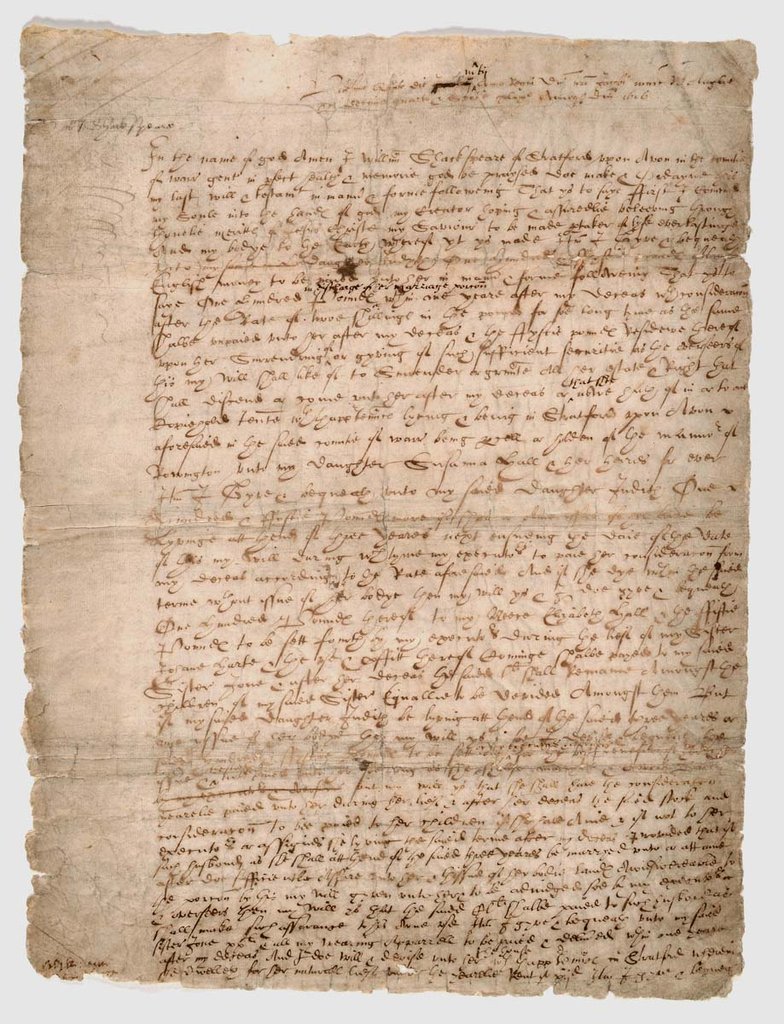William Shakespeare's life
Uncover the life of Britain’s greatest playwright William Shakespeare through the documents we hold. Discover him buying property, failing to pay his taxes, working for the king, and famously bequeathing his second-best bed.
Record of Shakespeare's purchase of New Place
Date: 8 May 1597
Catalogue reference: View the record N/A in the catalogue
This is one of several documents recording Shakespeare's purchase of New Place in Stratford upon Avon, Warwickshire from William Underhill. This record, written in Latin, documents the start of a case in the Court of Common Pleas. Unlike other types of court case where one party has a genuine grievance against another, this process was simply employed to create a formal record of the conveyance of the property in case proof of ownership was subsequently required. The property is described as one messuage (dwelling house, outbuildings and adjacent land), two gardens and two barns. New Place was Shakespeare’s family home from 1597 until he died there in 1616.
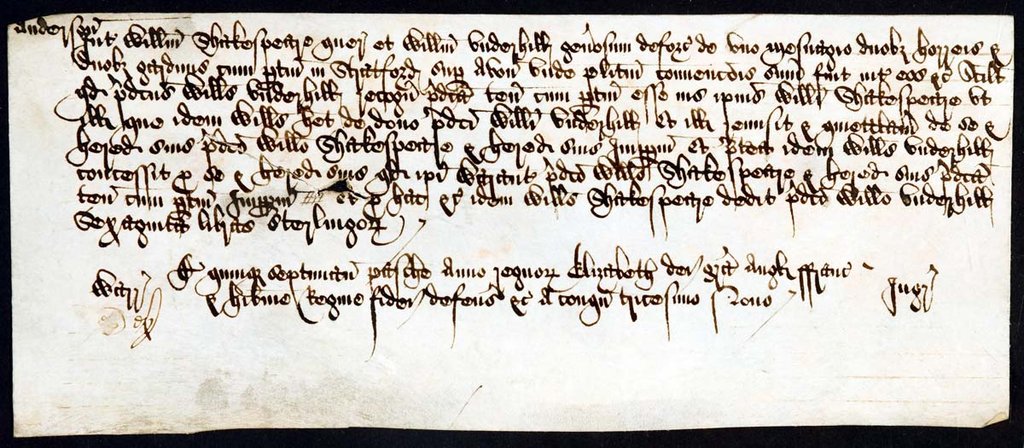
Record of Shakespeare's failure to pay taxes
Date: 1 October 1598
Catalogue reference: View the record N/A in the catalogue
William Shakespeare appears in this list of householders in St Helen’s parish in Bishopsgate ward, London. All are listed as due to pay their contributions towards a subsidy granted by Parliament to Queen Elizabeth I the year before. His wealth was calculated as £5 and the tax he was due to pay was 13 shillings and 4 pence (approximately £114 today).
The marginal note ‘Affid’ indicates that Shakespeare also appears on the list of defaulters for this payment, having failed to pay up when it was due. He was listed as still owing this sum in 1599, the same year he wrote As You Like it and Henry V.
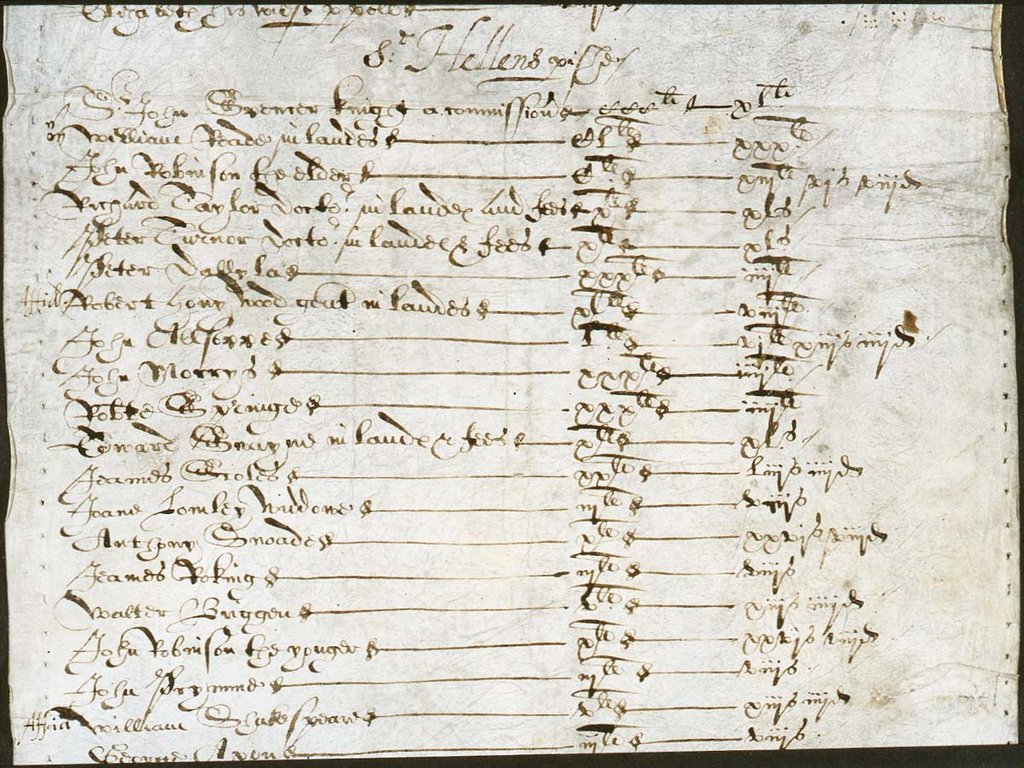
Record of Shakespeare as a tenant at the Globe
Date: 16 May 1599
Catalogue reference: View the record N/A in the catalogue
This type of document is known as an inquisition post mortem. It recorded the findings of an inquiry when someone died who was believed to hold land from the Crown. It established who was the heir and what income and rights were due to the king or queen. This particular inquisition related to the possessions of Thomas Brend of West Molesey, Surrey, who owned land on Maid Lane in Southwark. Written in Latin, it refers to a newly constructed house with a garden on Maid Lane in the occupation of William Shakespeare and others. This was the Globe theatre, built on the site on which Shakespeare and his colleagues had taken out a lease on 21 February 1599.
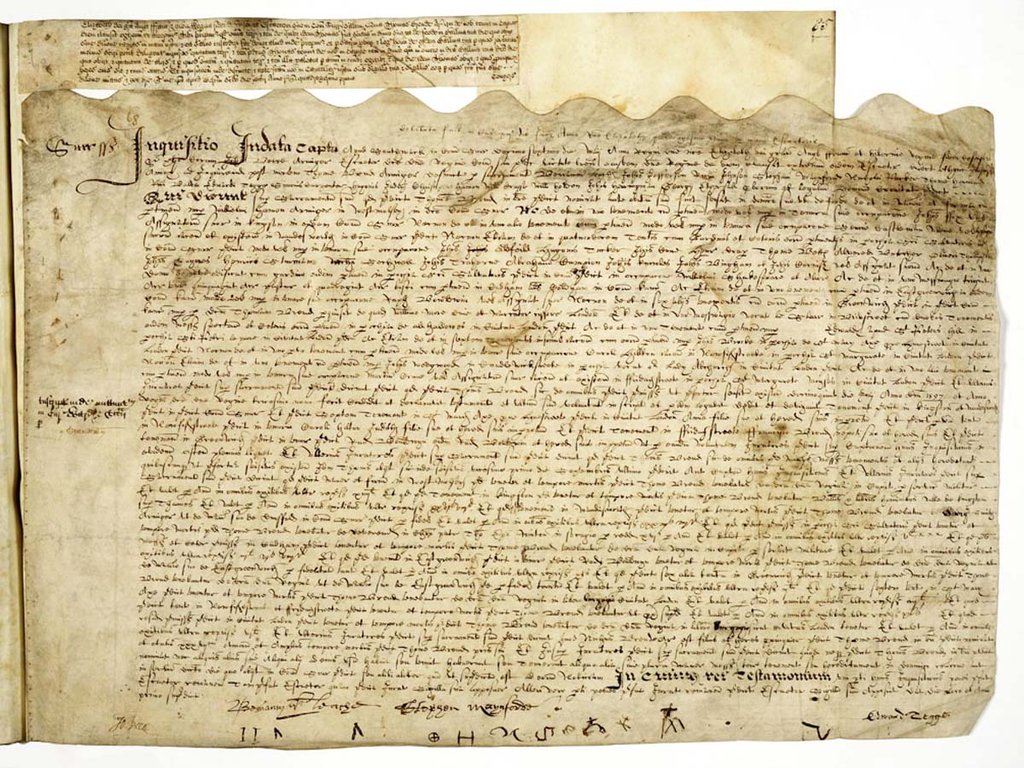
Application for Shakespeare's theatre company to perform plays
Date: May 1603
Catalogue reference: View the record N/A in the catalogue
This entry from a Signet Office docquet book (or register) records the application by Shakespeare’s company to be authorised to perform ‘comedies, tragedies, histories, interludes, morals, pastorals, stage plays and such like in all towns and the universities when the infection of the plague shall decrease’. The fee paid was six shillings and eight pence – at this time actors in London were normally paid less than one shilling a day.
The fees charged proved to be a sound investment for the ambitious 40-year-old Shakespeare and his fellow actors. It secured them the right to play at the royal court, where they were soon established as the chief entertainers. They were to perform at least 107 times before Shakespeare died in 1616.
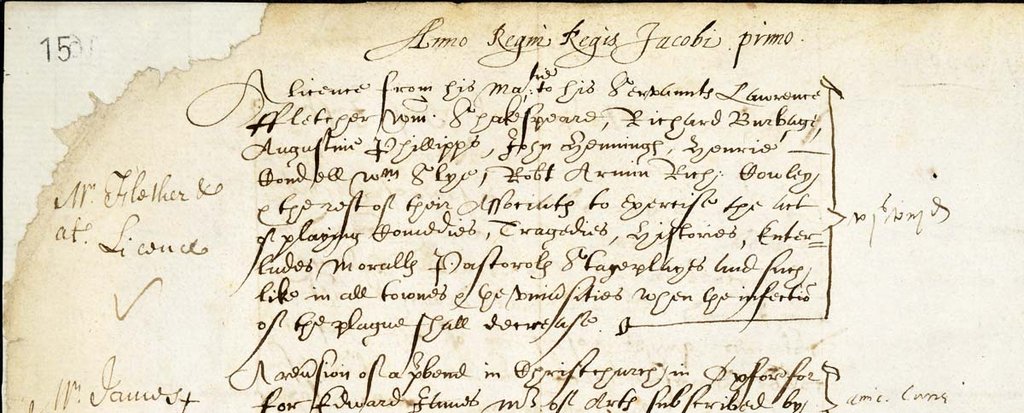
Shakespeare's red cloth for King James I's coronation
Date: 15 March 1604
Catalogue reference: View the record N/A in the catalogue
In 1604, following the death of Queen Elizabeth I the previous year, Shakespeare’s company were invited to take part in the procession marking King James I’s accession to the throne. This document records the issue of 4.5 yards of red cloth to Shakespeare and to others of his company – by this date known as the King’s Men – to wear at the royal entry of King James I into London.
The ceremonies had been postponed from the previous year because of the plague. The allocated measures of cloth given in the document are detailed in one of two columns, with a distinction between scarlet and red cloth. The former was usually more expensive than the latter.
Under the King’s patronage and the Jacobean era, Shakespeare and his company thrived. Macbeth, set in King James’s kingdom of Scotland and relevant to his interest in witchcraft, was written in 1606.
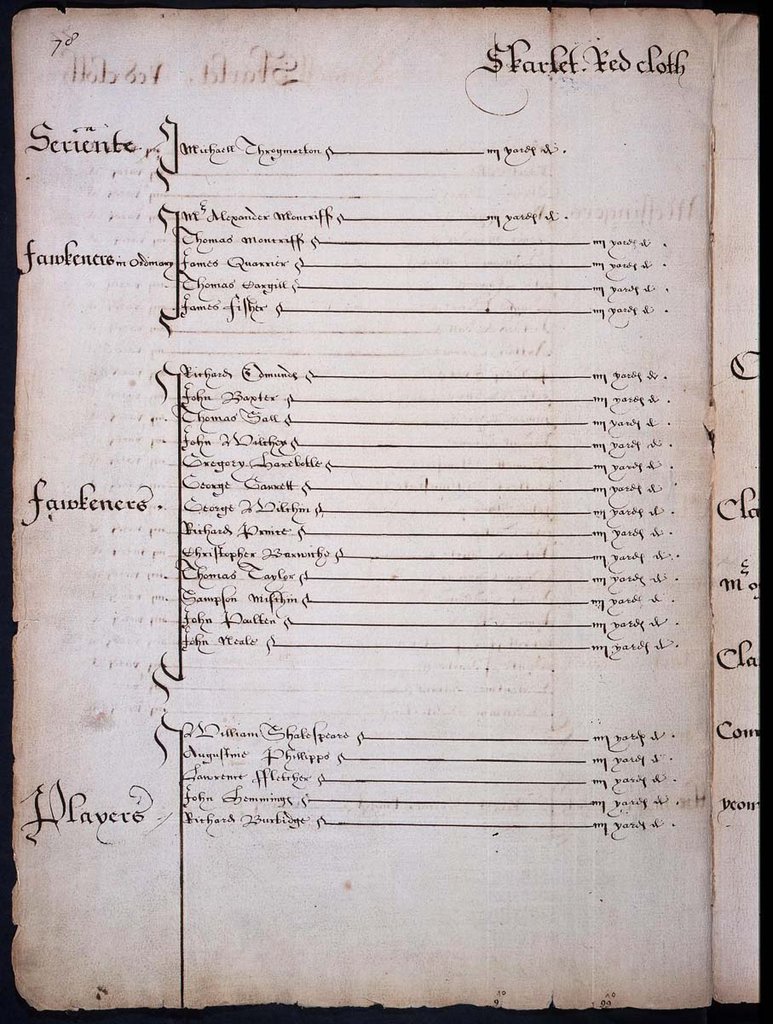
William Shakespeare's will
Date: 25 March 1616
Catalogue reference: View the record N/A in the catalogue
Shakespeare’s will, which was written in stages up to his death on 23 April 1616, has been subject to extensive analysis and interpretation, both of the text itself and of the material nature of the paper and ink used. Many readers have found it a unfeeling document leaving, as it does, only his second-best bed to his wife, Anne. Its purpose, however, was to transfer property rather than to document affection. Shakespeare left the bulk of his estate to his elder daughter, Susannah Hall. He left £300 to provide for his younger daughter, Judith.
This original will, signed by Shakespeare on each of its three pages, was left with the Prerogative Court of Canterbury when it was proved and has been in public custody ever since. Along with these, there are only three other known examples of his signature anywhere.
